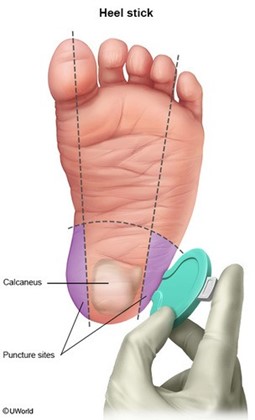A nurse is reinforcing teaching with a group of expectant parents regarding the proper use of a car seat. Which of the following statements by a parent indicates an understanding of the teaching?
"I will secure the seatbelt across my newborn's lap."
"I can move my child to a booster seat when she weighs 20 pounds."
"I will turn the car seat forward-facing when my child is 10 months old."
"I can place a rolled towel on each side of my newborn's head until he can hold his head up."
The Correct Answer is D
The statement by the parent that they can place a rolled towel on each side of their newborn's head until he can hold his head up indicates an understanding of the teaching. This is a safe and appropriate way to provide support for the newborn's head while in a car seat.
a) Securing the seatbelt across the newborn's lap is not safe. The seatbelt should be positioned across the newborn's chest and over their hips.
b) Moving a child to a booster seat when they weigh 20 pounds is not safe. Children should remain in a rear-facing car seat until they are at least 2 years old or until they reach the highest weight or height allowed by the car seat's manufacturer.
c) Turning the car seat forward-facing when the child is 10 months old is not safe. Children should remain in a rear-facing car seat until they are at least 2 years old or until they reach the highest weight or height allowed by the car seat's manufacturer.
Nursing Test Bank
Naxlex Comprehensive Predictor Exams
Related Questions
Correct Answer is D
Explanation
The client's partner assisting them with their meal tray (option d) is not as important as the other information and may not need to be included in the change-of-shift report.
A nurse providing change-of-shift report for a client who has heart failure should include all of the above information in the report.
The client's most recent blood pressure reading,morning laboratory results, and presence of pitting edema in the lower extremities are all important pieces of information that the incoming nurse should be aware of.
Correct Answer is C
Explanation
The nurse should apply a heat pack 5 to 10 minutes prior to the procedure when planning to obtain blood from a newborn via a heel stick. This helps to increase blood flow to the area and makes it easier to obtain the specimen.
a) Puncturing the heel to a depth of 4 mm is too deep and can cause injury to the newborn. The recommended depth for a heel stick is 2.4 mm or less.
b) Withholding feeding prior to collecting the specimen is not necessary.
d) Elevating the newborn's foot for 15 minutes following the procedure is not necessary.

Whether you are a student looking to ace your exams or a practicing nurse seeking to enhance your expertise , our nursing education contents will empower you with the confidence and competence to make a difference in the lives of patients and become a respected leader in the healthcare field.
Visit Naxlex, invest in your future and unlock endless possibilities with our unparalleled nursing education contents today
Report Wrong Answer on the Current Question
Do you disagree with the answer? If yes, what is your expected answer? Explain.
Kindly be descriptive with the issue you are facing.
